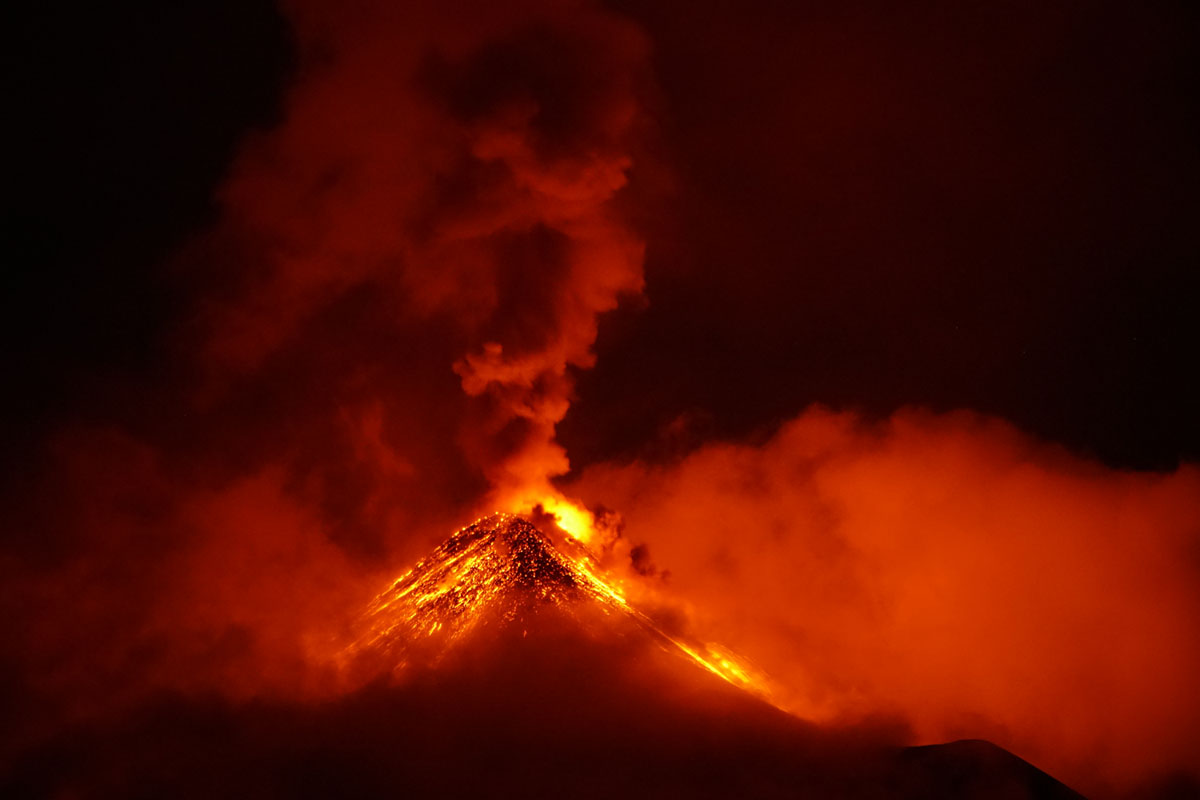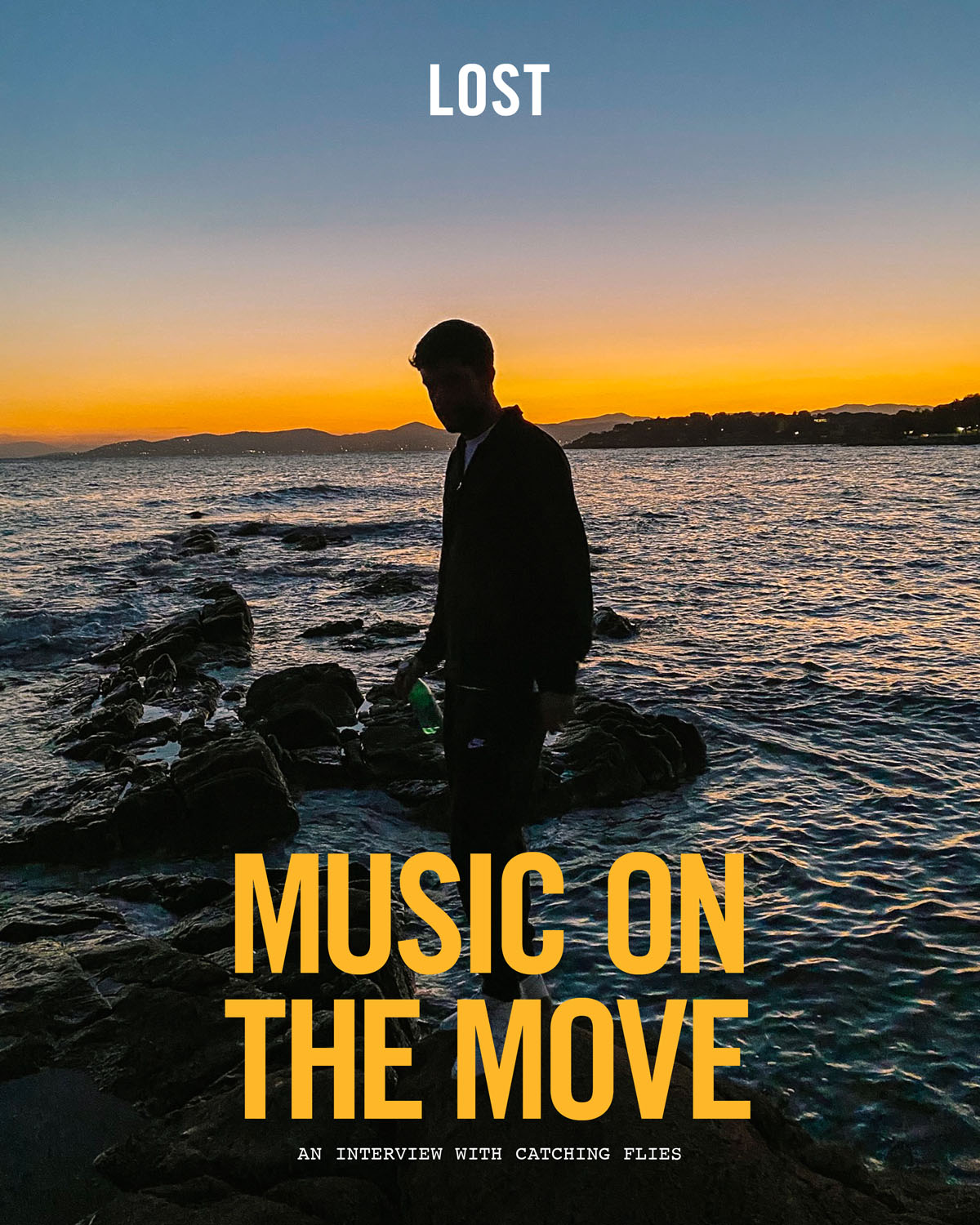BY PAUL GIFFORD
A year ago, I left my job to travel with some friends through Central and Latin America; I often heard tales about the Acatenango hike and the exhilarating encounter with Volcan de Fuego. After traveling north through Nicaragua and Honduras, we arrived in Antigua. The twin volcanos, Acatenango and Fuego, sit about 16 kilometres outside of the city. Acatenango has the highest peak (3976 meters) and has been dormant since its last eruption in 1972. It’s next door neighbor, Fuego, is an active stratovolcano that has been erupting since the Spanish conquest. The volcano pair is unique because it allows for the opportunity to summit Acatenango and watch Fuego erupt from a safe distance at an equal height. Fuego is famous for being continuously active at a low level. Small gas and ash eruptions occur every 20 to 30 minutes. Larger eruptions are rare.
Even though we were only hiking approximately 10 km, there was a large elevation increase. The hike took the group about six hours to complete, with a couple of breaks to rest. During the hike we hit every type of ecosystem: first farmland, then cloud forest, then high alpine forest, and finally through the volcanic zone to the summit. Shortly before we arrived at the campsite, Fuego’s peak began to shoot out smoke and rock. The explosions sounded like a loud artillery barrage as molten fragments sprayed into the sky. The camps located near the top of Acatenango had a clear view of the active Fuego from just a 2.6 km distance. We sat at the campsite and relaxed from the strain of the climb and watched Fuego spitting out materials from inner earth every 30 minutes. Our guide, Elmer, mentioned that we could hike to the mirador (lookout) and stand next to the crater. He pointed to our destination in the distance, a small hill with a narrow path next to the crater. I had heard that we could hike up to Fuego but I was shocked by how close our viewpoint would be to the crater. After weighing the risks we decided to take advantage of this once-in-a-lifetime opportunity.
At sunset, the materials ejected from Fuego’s crater showed their incandescent characteristics for the first time. Glowing pieces of lava rolled down Fuego’s slopes, creating smoke that climbed back up towards the crater. At 8pm, it was completely dark and our group of five began to descend Acatanango and hike through the valley separating the two titans. The hike to Fuego’s mirador was three hours down Acatanango’s peak, through the dividing valley, then back up Fuego’s slopes.
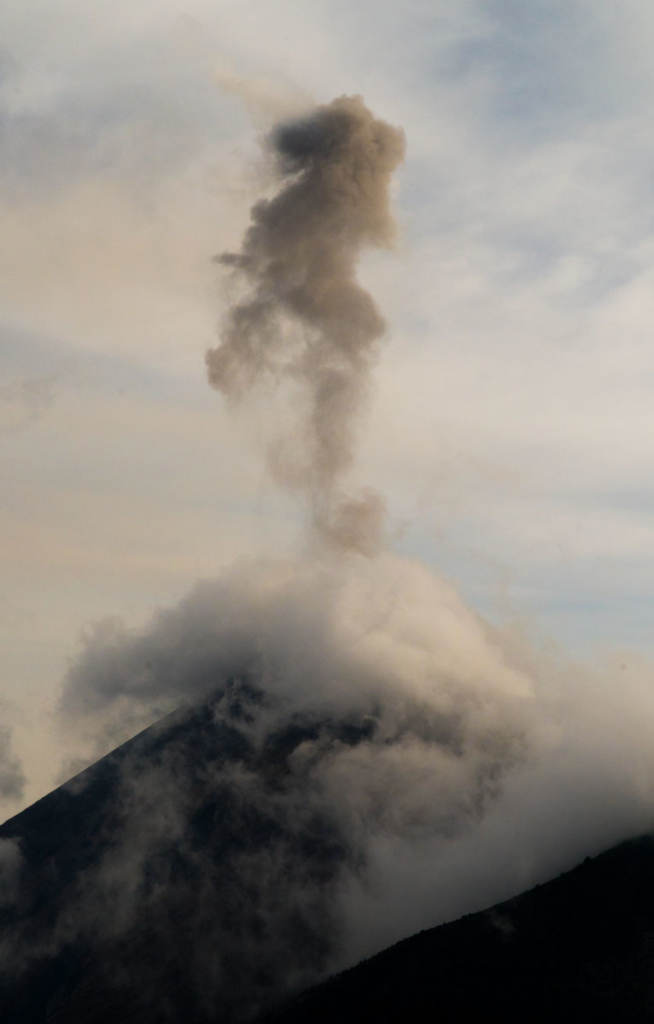
As we reached the top of the mirador, Fuego’s massive stature was unveiled and the reality of our proximity to an active volcano began to sink in. Equally stunning was an approaching cloud with an occasional burst of lighting in the distance. The wind was heavy and I began to shake my head in disbelief at the imminent encounter. Once we made it to the end of the path, the group sat on the gravel and realized that a nearby bank of clouds was closing in. Lightning began to strike around the crater as though a battle of the elements had begun. Suddenly the red glow began to swell and magnify as the lightning raged around the crater. I sank to the ground as anticipation weighed me down. BOOM! The crater blew molten rock and lava in a vibrant clash with the lightning in the background. Hell unleashed as an intense wave of heat hit my face while the sound of the explosion pounded into my chest. The molten rock tumbled down the side of the volcano and I sank into the gravel as we watched the theatrical play of lightning and fire. I had no words, and simply watched and stared in silence. The visual spectacle was accompanied by the rumbling and hissing of the eruption with vicious flames shooting out at an incredible speed. The hissing was replaced by deep, loud and clear bubbling sounds while the whole peak around the crater appeared to be on fire and melting away. I shook my head…I could not comprehend this experience and was grateful for the luck to be there on that particular night. We stayed for the performance until our feet and hands went numb. We walked back down the path with one last explosion as the volcano bid us farewell. The unique experience of that night is, without a doubt, the most amazing thing I have ever witnessed. Some experiences are so humbling they forever change our perspective towards our world and our place in it.
On June 3rd, 2018, exactly 23 days later, Fuego suddenly produced its most powerful eruption since 1974. I contemplated how I would write about my own awe-inspiring experience when so many people had lost their lives, homes and loved ones. The fatal eruption buried towns and killed many of the unprepared residents. Fuego had turned deadly, and the results were truly tragic. Donations of time and money are still needed to help the local communities who lost everything in the eruption. If you would like to help, GoFundMe has compiled a list of verified campaigns to help those affected by the Fuego volcano eruption.
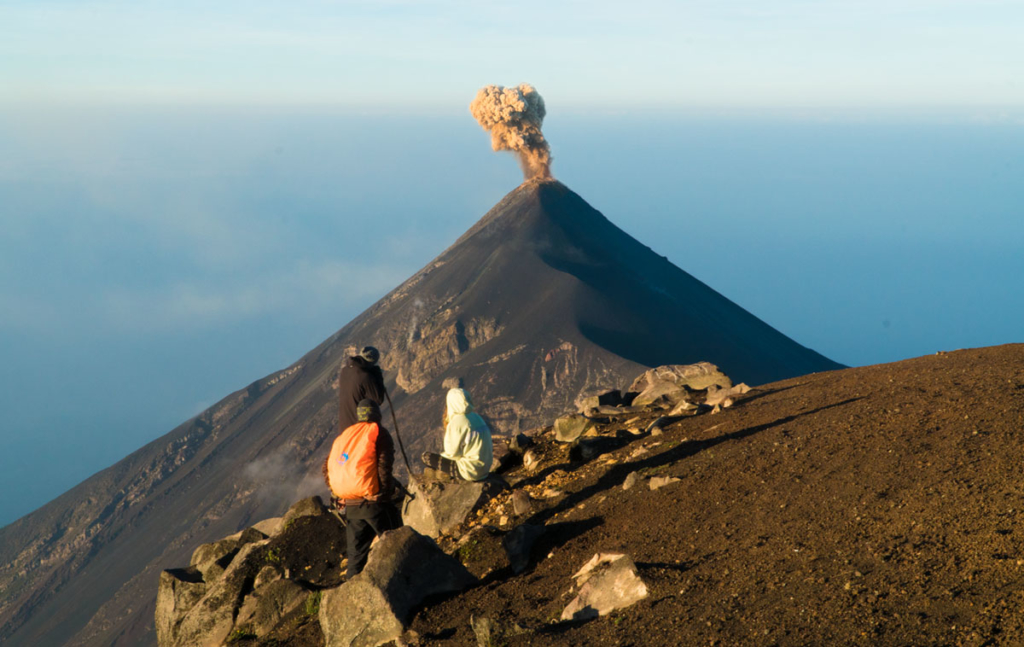
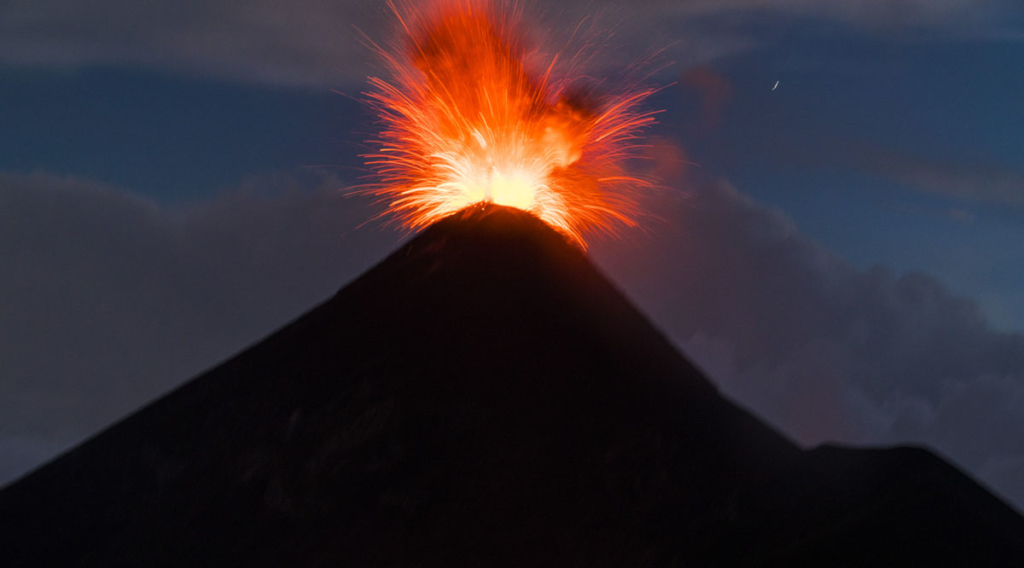
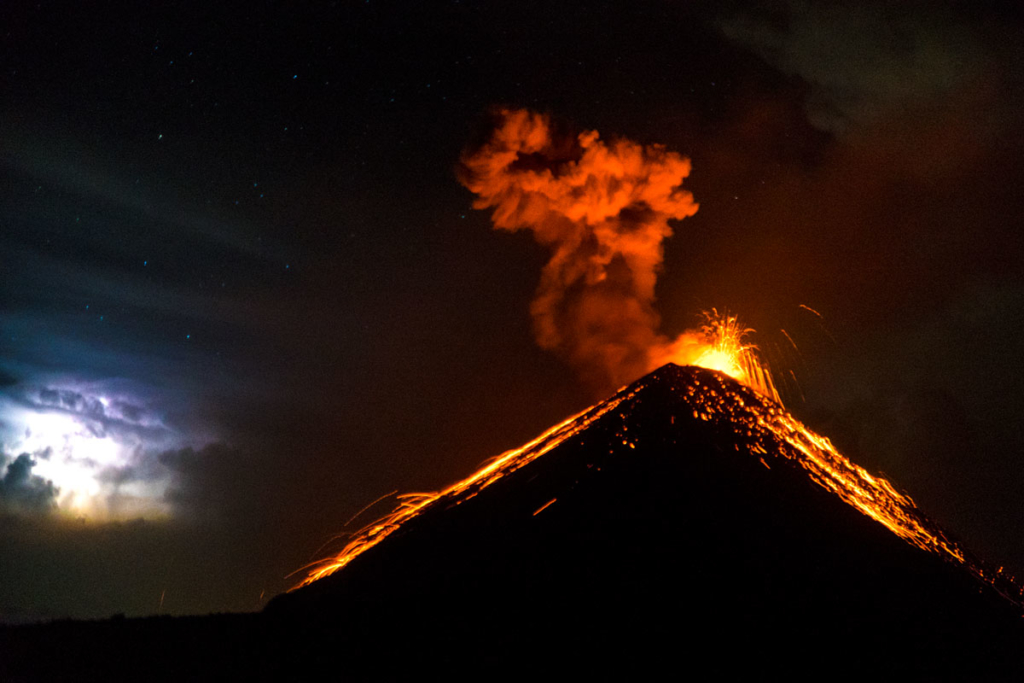
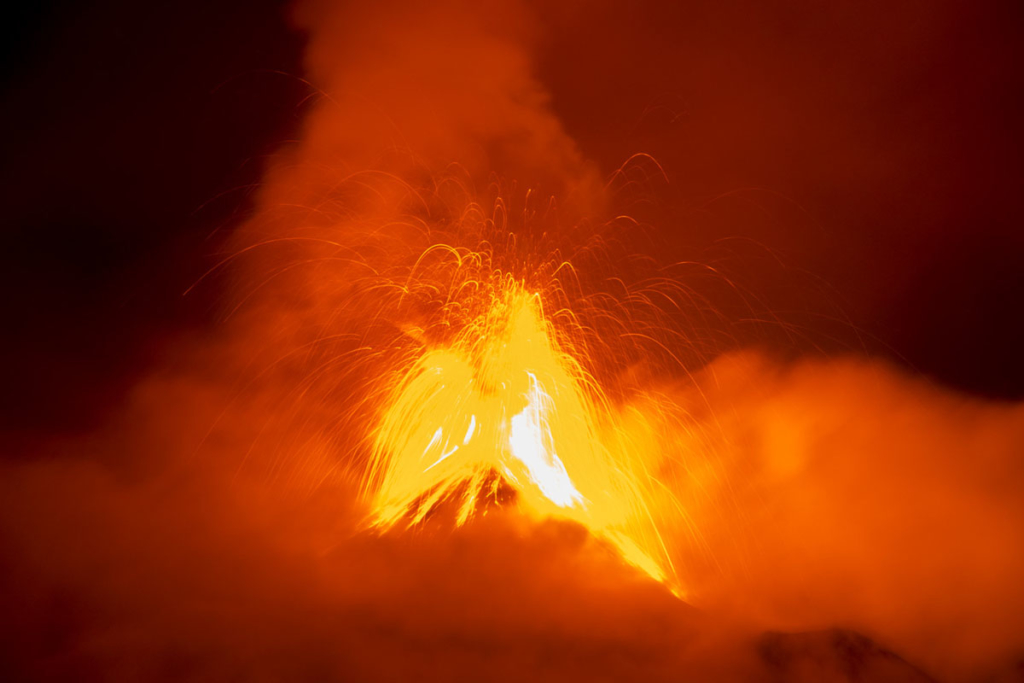
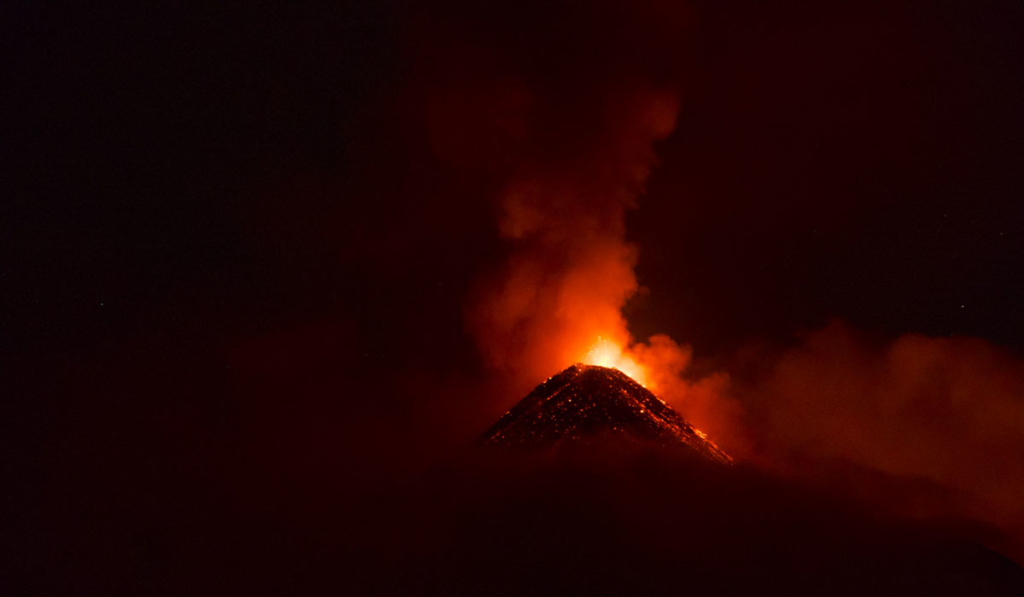
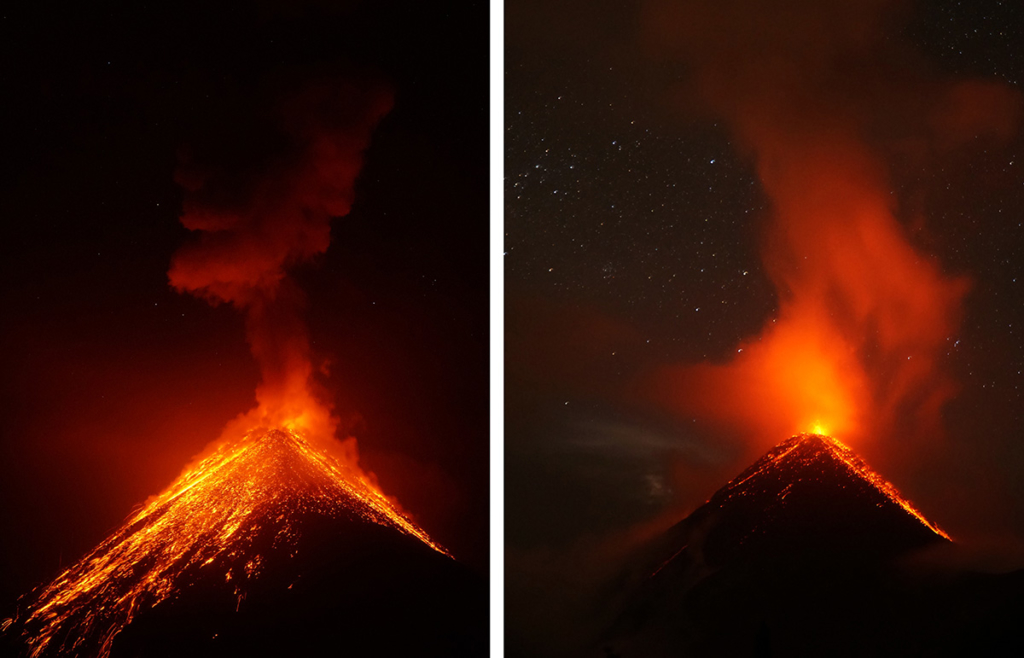
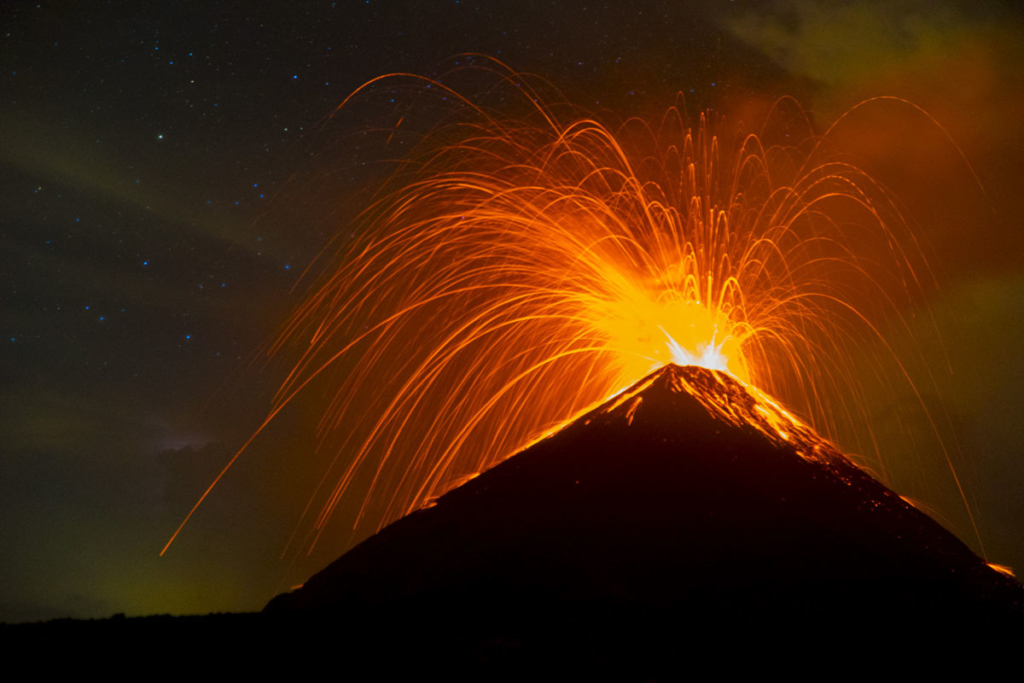
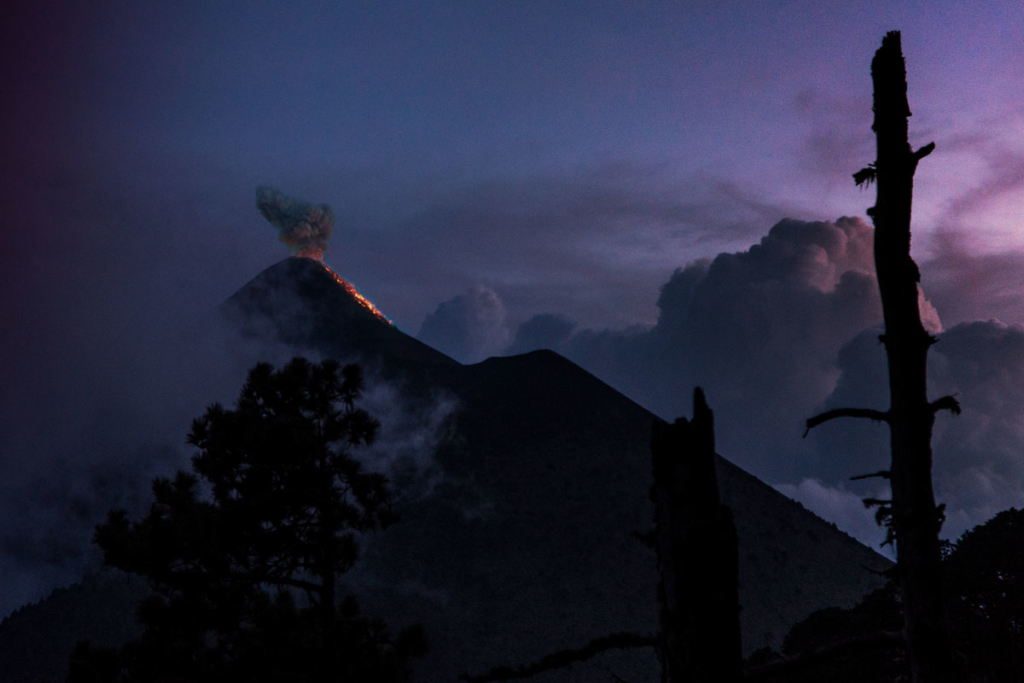
一年前,我辭去了工作,與朋友們一同去中美洲和拉丁美洲旅行。以前我常常聽到關於阿卡特南戈山徒步旅行的逸聞,關於邂逅富埃戈(Fuego)火山的激動人心的故事。我們向北穿行過尼加拉瓜與洪都拉斯,到達了安提瓜。在這座城外16公裏的地方,坐落著阿卡特南戈與富埃戈兩座火山。阿卡特南戈有著最高峰(3976米),自從1972年最後一次爆發後就處在休眠狀態。而它的隔壁鄰居,富埃戈火山,則是一座活躍的復式火山,自從西班牙人征服這裏後一直在噴發。這一對火山十分特殊,因為我們可以站在阿卡特南戈峰上,以一個安全距離觀看處在同樣海拔的富埃戈火山的爆發。富埃戈火山因其持續而少量的噴發狀態而聞名。每隔20至30分鐘,就有少量氣體與煙塵噴射出來。大型的噴發活動則比較少見。
雖然我們只走了約10公裏,海拔上卻上升了很多。我們團隊花了大約6小時完成徒步,中間休息了幾次。期間我們遇到了所有的生態系統;先是農莊,然後是雲霧森林,再之後是高海拔森林,最終通過火山灰區域到達頂峰。我們到達野營地後不久,富埃戈火山的頂端就噴出煙塵和石頭。熔巖碎片灑向空中,伴隨著火山爆發的聲音,聽起來仿佛一連串的炮擊。靠近阿卡特南戈山頂的野營地距富埃戈火山只有2.6公裏,視野清晰。我們坐在營地邊歇腳,邊緩解攀登的疲勞,邊看著富埃戈火山每隔半小時吐出一些來自地心的物質。向導埃爾默說我們可以去觀景臺,站在火山口邊上觀賞。他指向遠處的目的地,挨著火山口的一座小山,有窄窄的一條小路可達。之前就聽說我們可以爬到富埃戈火山邊上,但沒想到觀景臺距離火山口是這麽近,我嚇了一跳。權衡利弊後,我們決定抓住這一生一次的機會。
黃昏時,從富埃戈火山口噴出的物質第一次展示出了它們的熾熱。閃著光芒的熔巖沿著山坡流淌下來,制造出的煙塵又朝著火山口飄回去。晚上八點,天色完全暗下來,我們這個五人小隊準備走下阿卡特南戈山,沿著分隔這兩座巨人的山谷徒步回去。去富埃戈的觀景臺需要從阿卡特南戈的山峰向下徒步三小時,穿過中間的山谷,再爬上富埃戈的山坡。
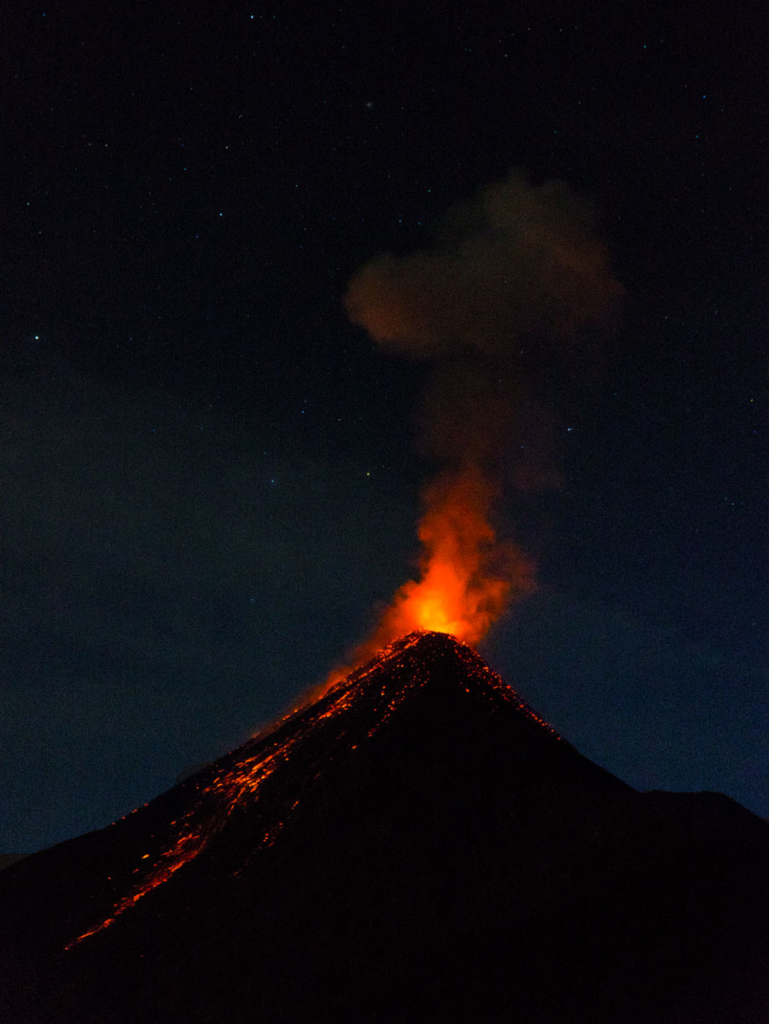
當我們到達觀景臺的最高點,富埃戈高大的身形顯露出來,我們終於意識到自己在靠近一座活火山的現實。同樣瑰麗的還有成片飄來的雲朵,遠處有閃電偶然出現。風很大,我開始搖了搖頭,不相信即將發生的相遇。一走到這條路的盡頭,我們就坐下在砂石上,長長的一條雲正在靠近。閃電落在火山口周圍,好像元素之間的戰爭已經打響。紅色的光芒忽然間湧動起來,因火山口周圍肆意張狂的閃電而越發誇張。期望太重,我疲倦地陷坐在地。轟隆!在閃電的背景下,火山口噴射出融化的巖石和巖漿強烈碰撞。隨著爆炸聲撞擊入我的胸腔,地獄釋放出一股強烈的熱浪,向我的面上襲來。融化的石塊隨著山坡滾落,我一邊看這場誇張的閃電與火的表演,一邊陷入砂礫中。我沈默無言,只是靜靜地盯著看。這場視覺的奇觀伴隨著噴發時“隆隆”與“嘶嘶”的聲音,兇猛的火焰以不可置信的高速噴射出來。環繞著火山口的整個山峰看起來都像是著火而融化了,嘶嘶的聲音被深沈而又清晰的巨大爆破聲取代。我晃了晃頭,無法理解這一切,卻為自己能在那個特別的夜晚到了那裏而感恩。我們為這場表演而駐足,直到手腳麻木。隨著火山最後一次告別似的爆發,我們沿著原路返回。那一晚的獨特經歷,毫無疑問,是我見過的最神奇的事情。有些經歷令人感到如此卑微,它們永遠地改變了我們看世界的角度與所處的位置。
在2018年的六月三日,也就是23天之後,富埃戈火山突然發生了自1974年以來最大的一次爆發。我沈思著,當這麽多人因此失去性命、家園與愛人時,我要如何書寫自己這次又敬畏又激動的經歷。這場毀滅性的爆發淹沒了城鎮,奪去了很多毫無準備的居民的生命。富埃戈已變得致命,結局實在悲慘。在火山爆發中失去了一切的當地社區還需要很多時間和金錢的援助。如果你想要參與救援,GoFundMe已經列出了一些被認可的救助活動,幫助那些在富埃戈火山噴發中受影響的人。
Paul Gifford was raised in Los Angeles and has been based in San Francisco since 2014. He works as a multimedia designer and creative strategist exploring the intersection of art, design, and technology. He is passionate about travel and the interrelations between cultures and their environments.
Paul Gifford 成長於洛杉磯,自2014年起在三藩市生活。作為一名多媒體設計師與創意策略師,他探索藝術、設計與科技之間的交叉點。Paul 對旅行還有文化及其環境之間的相互關系充滿激情。
